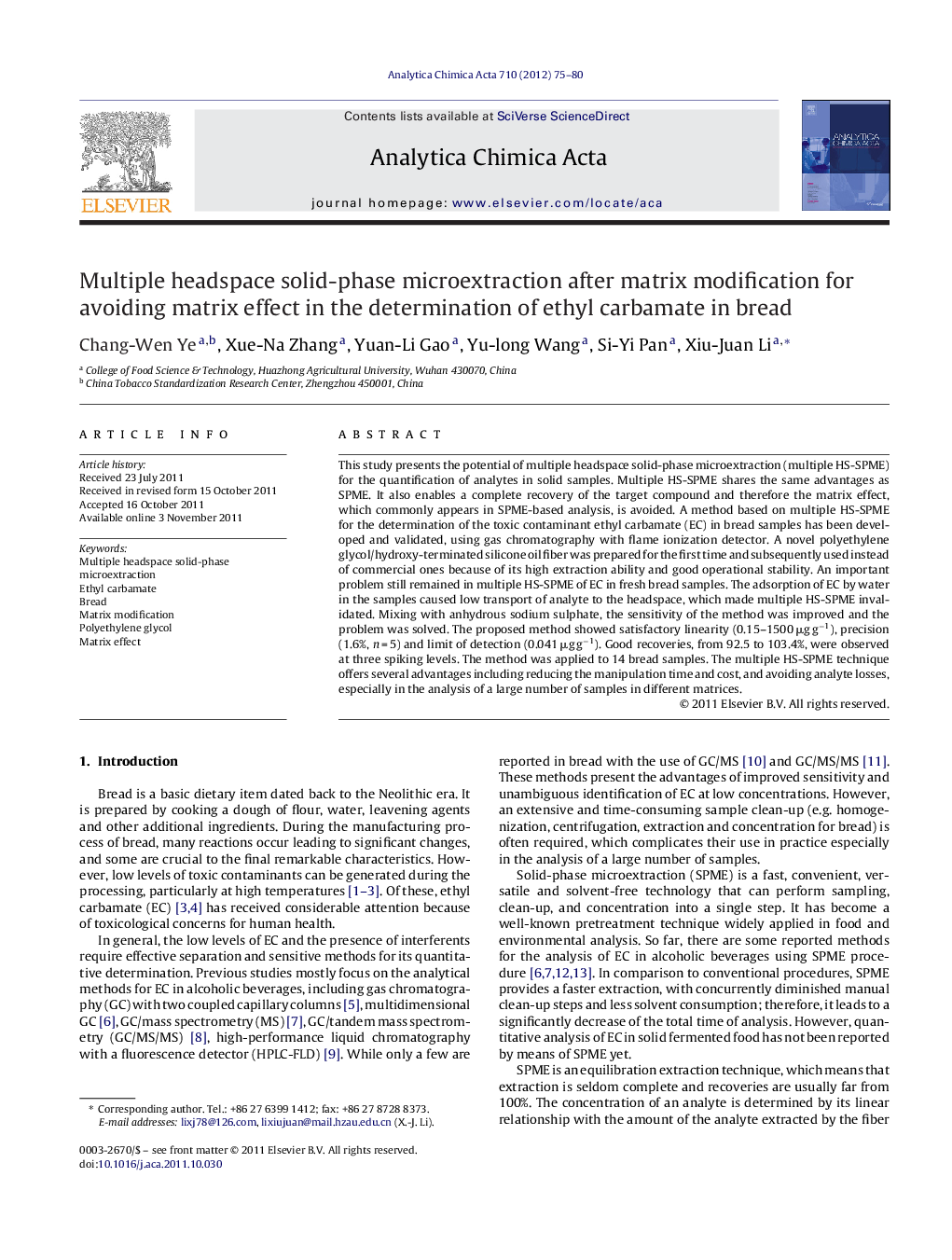| Article ID | Journal | Published Year | Pages | File Type |
|---|---|---|---|---|
| 1166593 | Analytica Chimica Acta | 2012 | 6 Pages |
This study presents the potential of multiple headspace solid-phase microextraction (multiple HS-SPME) for the quantification of analytes in solid samples. Multiple HS-SPME shares the same advantages as SPME. It also enables a complete recovery of the target compound and therefore the matrix effect, which commonly appears in SPME-based analysis, is avoided. A method based on multiple HS-SPME for the determination of the toxic contaminant ethyl carbamate (EC) in bread samples has been developed and validated, using gas chromatography with flame ionization detector. A novel polyethylene glycol/hydroxy-terminated silicone oil fiber was prepared for the first time and subsequently used instead of commercial ones because of its high extraction ability and good operational stability. An important problem still remained in multiple HS-SPME of EC in fresh bread samples. The adsorption of EC by water in the samples caused low transport of analyte to the headspace, which made multiple HS-SPME invalidated. Mixing with anhydrous sodium sulphate, the sensitivity of the method was improved and the problem was solved. The proposed method showed satisfactory linearity (0.15–1500 μg g−1), precision (1.6%, n = 5) and limit of detection (0.041 μg g−1). Good recoveries, from 92.5 to 103.4%, were observed at three spiking levels. The method was applied to 14 bread samples. The multiple HS-SPME technique offers several advantages including reducing the manipulation time and cost, and avoiding analyte losses, especially in the analysis of a large number of samples in different matrices.
Graphical abstractFigure optionsDownload full-size imageDownload as PowerPoint slideHighlights► Multiple headspace SPME for eliminating matrix effect in solid samples analysis. ► A novel polyethylene glycol/hydroxy-terminated silicone oil fiber is used. ► The bread is desiccated by mixing with anhydrous sodium sulphate.
